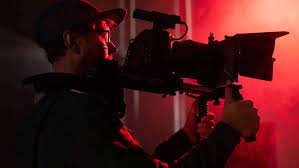Introduction
Technology has long been a driving force behind innovation in the film industry, transforming every aspect of the filmmaking process from pre-production to post-production. From digital cameras to computer-generated imagery (CGI) and advanced editing software, technological advancements have revolutionized the way films are produced, enhancing creativity, efficiency, and visual storytelling. This article explores the profound influence of technology on film production and its implications for the future of cinema.
Digital Cameras: Redefining Cinematography
The transition from traditional film cameras to digital cameras marks a significant milestone in film production. Digital cameras offer filmmakers greater flexibility, allowing for easier manipulation of exposure, color grading, and framing. Additionally, digital cinematography enables real-time monitoring of footage, streamlining the filmmaking process and reducing production costs associated with traditional film stock.
CGI and Visual Effects
Computer-generated imagery (CGI) and visual effects have transformed the possibilities of visual storytelling in film. Advances in CGI technology allow filmmakers to create stunningly realistic environments, creatures, and special effects that were previously unimaginable. From epic fantasy worlds to larger-than-life action sequences, CGI enhances immersion and expands the creative boundaries of filmmaking.
Motion Capture Technology
Motion capture technology has revolutionized character animation, enabling actors to bring digital characters to life with unprecedented realism. By capturing the movements and expressions of actors in real-time, motion capture technology enhances the believability and emotional depth of digital characters, blurring the line between live-action and animation.
Virtual Production and LED Screens
Virtual production techniques, such as the use of LED screens and real-time rendering, offer filmmakers innovative ways to create immersive environments and backgrounds. LED screens serve as dynamic backdrops, allowing actors to interact with virtual sets in real-time. This approach enhances creative freedom, reduces reliance on physical locations, and streamlines the production process.
Non-Linear Editing Software
Non-linear editing software has revolutionized post-production workflows, empowering filmmakers to manipulate and refine footage with unprecedented precision. Advanced editing tools offer a wide range of creative possibilities, from seamless transitions to intricate visual effects. Non-linear editing software accelerates the editing process, enabling filmmakers to experiment and iterate more efficiently.
Remote Collaboration Tools
The rise of remote collaboration tools has transformed the way filmmakers work together, especially in light of global events like the COVID-19 pandemic. Cloud-based platforms enable seamless collaboration among geographically dispersed teams, facilitating real-time communication, file sharing, and project management. Remote collaboration tools enhance productivity and flexibility, enabling filmmakers to adapt to evolving production challenges.
AI and Machine Learning in Film Production
Artificial intelligence (AI) and machine learning technologies are increasingly being integrated into various aspects of film production. AI algorithms can assist with tasks such as script analysis, scene composition, and color grading, streamlining the creative process and enhancing efficiency. Additionally, machine learning algorithms can analyze audience preferences and trends, informing marketing strategies and content development decisions.
Immersive Technologies: VR and AR
Immersive technologies, such as virtual reality (VR) and augmented reality (AR), offer new avenues for storytelling and audience engagement. VR enables viewers to immerse themselves in virtual environments, while AR overlays digital elements onto the real world. Filmmakers are exploring the potential of VR and AR to create interactive experiences that blur the boundaries between traditional cinema and immersive entertainment.
Accessibility and Inclusivity
Technology has played a crucial role in enhancing accessibility and inclusivity in film production. Closed captioning, audio descriptions, and assistive technologies enable individuals with disabilities to enjoy films and participate in the filmmaking process. Additionally, advancements in camera stabilization and lightweight equipment empower filmmakers from diverse backgrounds to tell their stories with greater ease and affordability.
The Future of Film Production
As technology continues to evolve, the future of film production holds exciting possibilities. Innovations such as AI-driven content generation, real-time virtual production, and immersive storytelling experiences will shape the next generation of cinema. The convergence of technology and creativity promises to usher in a new era of filmmaking, where boundaries are pushed, and storytelling reaches new heights.
Conclusion
The influence of technology on film production is undeniable, reshaping the way stories are told, and cinematic experiences are created. From digital cameras to CGI, motion capture, and immersive technologies, technological advancements have expanded the creative possibilities of filmmaking while enhancing efficiency and accessibility. As filmmakers continue to embrace new tools and techniques, the intersection of technology and storytelling will continue to drive innovation and redefine the future of cinema.







